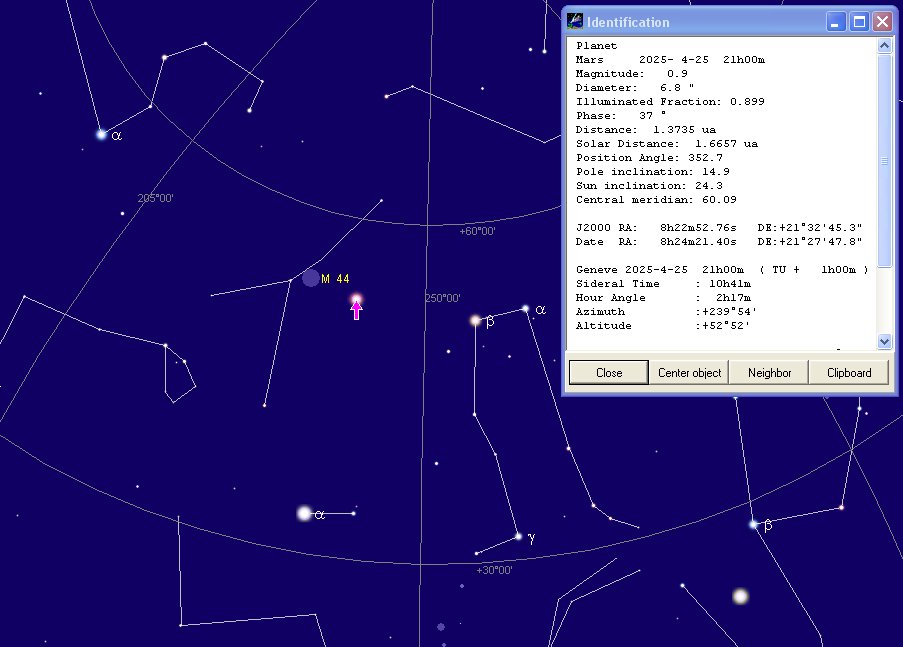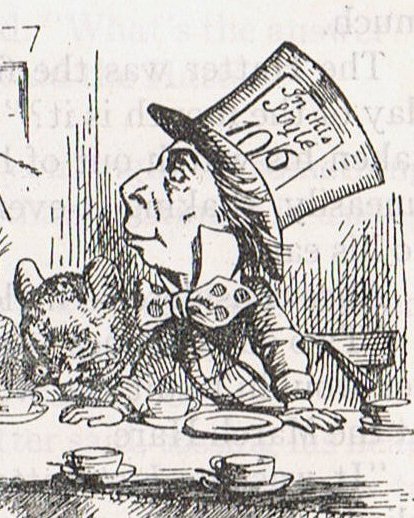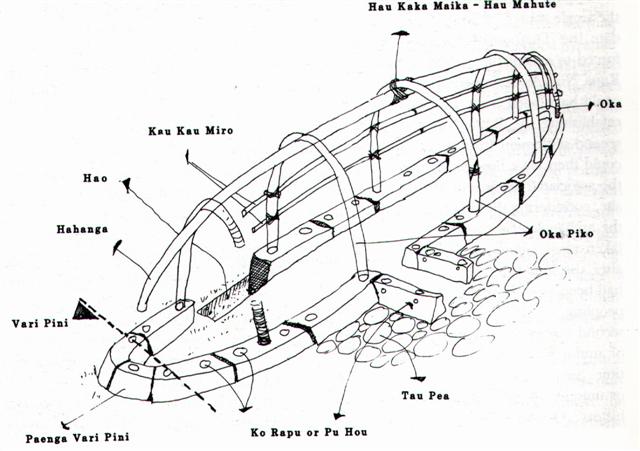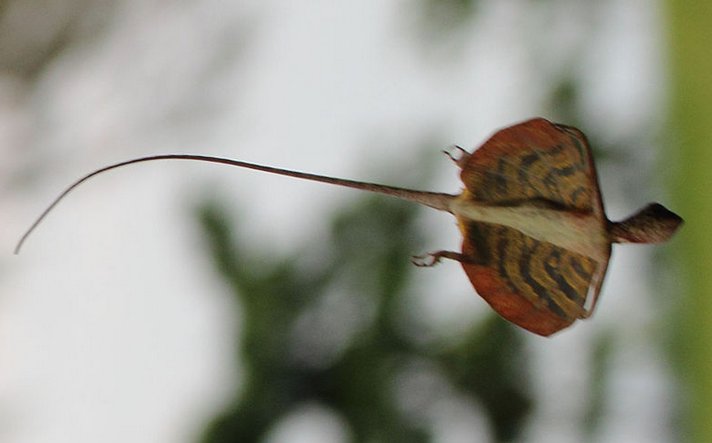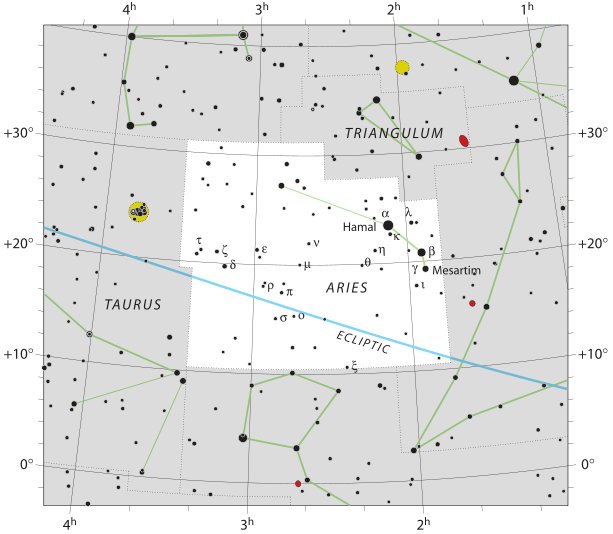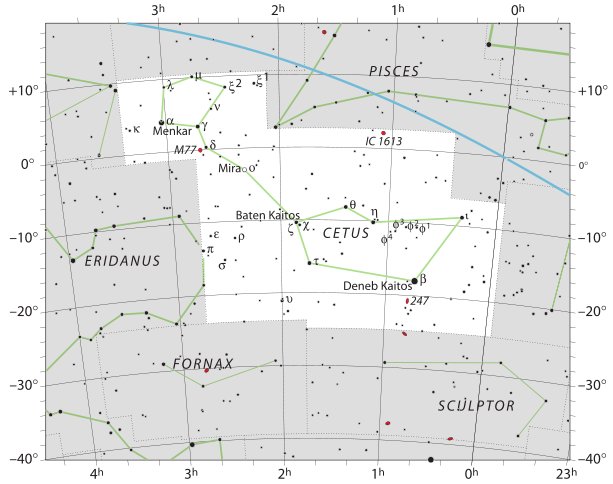145. Let's now find out via the program application Cartes du Ciel if indeed Mars will be found around 50 days later in AD 2025 than 2 years earlier in AD 2023. This is the view of the night sky in April 25 AD 2025:
Surprise, surprise! As if by chance - and certainly with no conscious plan or even notion of mine - 145 (→ 5 * 29) is not only the right ascension day number place for the planet Mars precisely 2 years after April 25 AD 2023.but also the number of this current text section of mine. First of all we should realize that we have no information about in which year it was said that the Chorti diviners began their sky raising ceremonies. In principle it could be in AD 2025 as well as in some other equivalent year. The conclusion should be that the Chorti indians disregarded the places of the fixed stars and the planets. It was only a matter of where the Sun was in his yearly cycle. However, in order to determine the exact current position of the Sun they could have used the fixed stars. Which method in turn would imply that the Sun position in April 25 should be 115 + 11 = 126 (→ 2 * 63, nine fortnights) days after the northern winter solstice in December 21 (355). Then we should discover that when counting from spring equinox in the previous year the distance to April 25 (115) will be *35 + 365 = *400 right ascension days. Presumably this was a well known fact: ... The Sacred Book of the ancient Maya Quiche, the famous Popol Vuh (the Book of Counsel) tells of Zipacna, son of Vucub-Caquix (= Seven Arata). He sees 400 youths dragging a huge log that they want as a ridgepole for their house. Zipacna alone carries the tree without effort to the spot where a hole has been dug for the post to support the ridgepole. The youths, jealous and afraid, try to kill Zipacna by crushing him in the hole, but he escapes and brings down the house on their heads. They are removed to the sky, in a 'group', and the Pleiades are called after them ... The hole for the ridgepole should thus be at spring equinox, and here the four Chorti diviners ('bacabob') would begin their work of raising the sky dome. ... Later on in this series of rituals, the Chorti go through a ceremony they call raising the sky. This ritual takes place at midnight on the twenty-fifth of April and continues each night until the rains arrive. In this ceremony two diviners and their wives sit on benches so that they occupy the corner positions of the cosmic square. They take their seats in the same order as the stones were placed, with the men on the eastern side and the women on the west. The ritual actions of sitting down and lifting upward are done with great precision and care, because they are directly related to the actions done by the gods at Creation. The people represent the gods of the four corners and the clouds that cover the earth. As they rise from their seats, they metaphorically lift the sky. If their lifting motion is uneven, the rains will be irregular and harmful ...
... Among the multitude of gods worshipped by these people [the Maya] were four whom they called by the name Bacab. These were, they say, four brothers placed by God when he created the world at its four corners to sustain the heavens lest they fall . . In the ms. Ritual of the Bacabs, the cantul kuob [the suffix '-ob' indicates plural], cantul bacabob, the four gods, the four bacabs, occur constantly in the incantations, with the four colors, four directions, and their various names and offices ... ... It is certainly true that the exterior form of the hare paenga, when the superstructure and thatch are intact, resembles an overturned boat, with the form established by the foundation. However, it is equally true (and perhaps equally important) that the configuration of the foundation is otherwise most like the Rapa Nui vulva design called komari. The komari is the quintessential female symbol which is everywhere prominent in Rapa Nui art, often carved in rock and wood, incised on human crania, and painted on the human body. In the hare paenga foundation form, the komari is cut in stone and embedded in the earth, the cosmologically female realm. Spanning above, over and virtually into this komari foundation is the ridgepole 'backbone' and curved rafter 'ribs' of what I surmise to be a symbolically male form. In short, we have a shelter which may be metaphorically understood as 'the sky father enclosing his progeny as he embraces the earth'. Those progeny entered and departed this male/female, earth/sky form through a low, dark tunnel which may be logically compared to the birth canal. This postulated symbolism does not, of course, negate the 'overturned boat' comparison, since Polynesian canoes were often likened to the bodies of great ancestors or to Tane as First Man. The canoe which transported the first exploratory voyage to Rapa Nui was said to have been called The Living Wood, a reference to Tane. Indeed, it is likely that the 'overturned boat' concept and its relationship to home, hearth and lineage, which is so graphically visible, was commonly understood (hence its retention in the oral literature), while the more esoteric godly connections, perhaps along the lines of those explored here, were known only by spiritual leaders ...
The Chorti diviners would then continue their work of raising the sky every midnight until the rainclouds covered the Sun. ... According to an etiological Hawaiian myth, the breadfruit originated from the sacrifice of the war god Kū. After deciding to live secretly among mortals as a farmer, Ku married and had children. He and his family lived happily until a famine seized their island. When he could no longer bear to watch his children suffer, Ku told his wife that he could deliver them from starvation, but to do so he would have to leave them. Reluctantly, she agreed, and at her word, Ku descended into the ground right where he had stood until only the top of his head was visible. His family waited around the spot he had last been day and night, watering it with their tears until suddenly a small green shoot appeared where Ku had stood. Quickly, the shoot grew into a tall and leafy tree that was laden with heavy breadfruits that Ku's family and neighbors gratefully ate, joyfully saved from starvation ...  April 25 could evidently have been a date determined to be where the Sun would rise at the horizon in the east together with the pair (→ Moon) of ξ (djed) stars at the top of the head of Cetus, as if yoked together with the single (→ Sun) ξ star in Aries:
Possibly the place when the Sun rose together with the rainy Hyades was determining the terminal day for raising the sky. If so, the Chorti diviners had to work for a month, because *35 (April 25) + *29 = *64 (May 24). 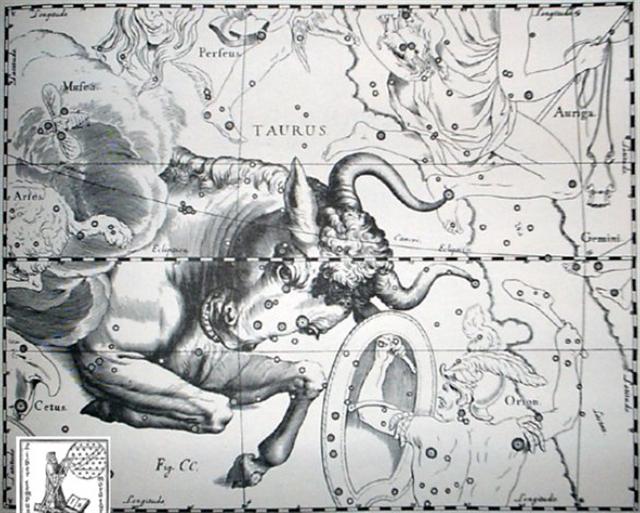 |
|||||||||||||||||||||||||||||||||||||||||||||||||||||||||||||||||||||||||||||||||||||||||||||||||||||||||||||||||||||||||||||||||||||||||||||||||||||||||||||||||||||||||||||||||||||||||||||||||||||||||||||||
